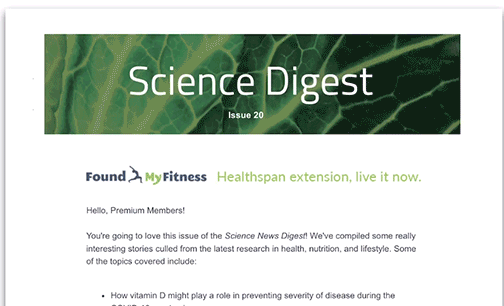Milk Fat Globule Membranes (MFGMs) in breast milk affect development of gut, brain, and intelligence
Get the full length version of this episode as a podcast.
This episode will make a great companion for a long drive.
The Omega-3 Supplementation Guide
A blueprint for choosing the right fish oil supplement — filled with specific recommendations, guidelines for interpreting testing data, and dosage protocols.
Breast milk contains a variety of fatty acids to nourish a growing infant. The fatty acids in breast milk are encapsulated in fat globules surrounded by a triple-layered structure called a milk fat globule membrane, or MFGM. The MFGM is interspersed with a variety of proteins, enzymes, and cholesterol that together exert bioactive properties that confer many of the antibacterial and anti-inflammatory properties of breast milk. Most infant formulas don't contain MFGMs, but evidence suggests that the bovine form of the MFGM exerts similar beneficial effects on human infants when included in infant formula. In this clip, Dr. Rhonda Patrick describes the structure and function of milk fat globule membranes in breast milk.
Fats are the major source of energy provided in breast milk, supplying roughly half of its total calories. Fats provide energy for growth, aid in the maturation of the infant's gut and central nervous system, and provide protection from pathogens, including group B streptococcus bacteria. Nearly 200 fatty acids have been identified in human breast milk. The structural configuration of these fats, which is not always replicated by many infant formulas, enhances their absorption in the infant's gut. All of these fats are encapsulated in fat globules surrounded by a triple layered structure called milk fat globule membrane or MFGM.
Components of the MFGM exert bioactive properties that confer many of the antibacterial in anti-inflammatory properties of breast milk. Unfortunately, most infant formulas do not contain MFGM. However, a recent clinical trial found that the bovine form of MFGM exerts similar beneficial effects on human infants when included in infant formula. The double-blind randomized control trial involved 451 healthy full-term infants who received either regular formula or formula containing MFGM and lactoferrin, an iron-binding protein found in human and cow's milk. At the end of the 18-month long study, the infants who received formula with the MFGM and lactoferrin scored higher on cognitive, language, and motor skills than infants who received ordinary formula. In fact, their scores were similar to those observed in children who were breastfed, suggesting that the addition of MFGM and lactoferrin could narrow the gap in cognitive development commonly observed between formula-fed infants and breastfed infants.
A molecule composed of carboxylic acid with a long hydrocarbon chain that is either saturated or unsaturated. Fatty acids are important components of cell membranes and are key sources of fuel because they yield large quantities of ATP when metabolized. Most cells can use either glucose or fatty acids for this purpose.
An essential mineral present in many foods. Iron participates in many physiological functions and is a critical component of hemoglobin. Iron deficiency can cause anemia, fatigue, shortness of breath, and heart arrhythmias.
An iron-binding protein found in human and bovine milk, as well as other fluids, such as saliva, tears, and nasal secretions. Lactoferrin exerts antiviral and antibacterial properties. Some evidence indicates that lactoferrin may be protective against coronaviruses.[1]
- ^ Kell, Douglas B.; Heyden, Eugene L.; Pretorius, Etheresia (2020). The Biology Of Lactoferrin, An Iron-Binding Protein That Can Help Defend Against Viruses And Bacteria Frontiers In Immunology 11, .
A triple-layered structure that surrounds fat globules present in breast milk. The MFGM is interspersed with a variety of proteins, enzymes, and cholesterol that, together, exert bioactive properties that confer many of the antibacterial and anti-inflammatory properties of breast milk. Currently, most infant formulas do not contain MFGM; however, evidence suggests that the bovine form of MFGM exerts similar beneficial effects on human infants when included in infant formula.
In general, anything that can produce disease. Typically, the term is used to describe an infectious agent such as a virus, bacterium, prion, fungus, or other microorganism.
Member only extras:
Learn more about the advantages of a premium membership by clicking below.
Get email updates with the latest curated healthspan research
Support our work

Every other week premium members receive a special edition newsletter that summarizes all of the latest healthspan research.
Nutrition News
- Childhood body composition and fitness influence anxiety and depression—higher visceral fat increases risk, while greater lean mass and cardiorespiratory fitness offer protection.
- An okra-enriched diet could counteract metabolic disruptions caused by overfeeding in infancy.
- Long-term adherence to healthy diets more than doubles the likelihood of maintaining good overall health, both mentally and physically, into mid-70s.
- Strawberry consumption boosts thinking speed and lowers systolic blood pressure by 3% in older adults.
- A modified Mediterranean ketogenic diet boosts healthy brain fats and reduces Alzheimer's-associated markers, suggesting potential neuroprotective effects.






